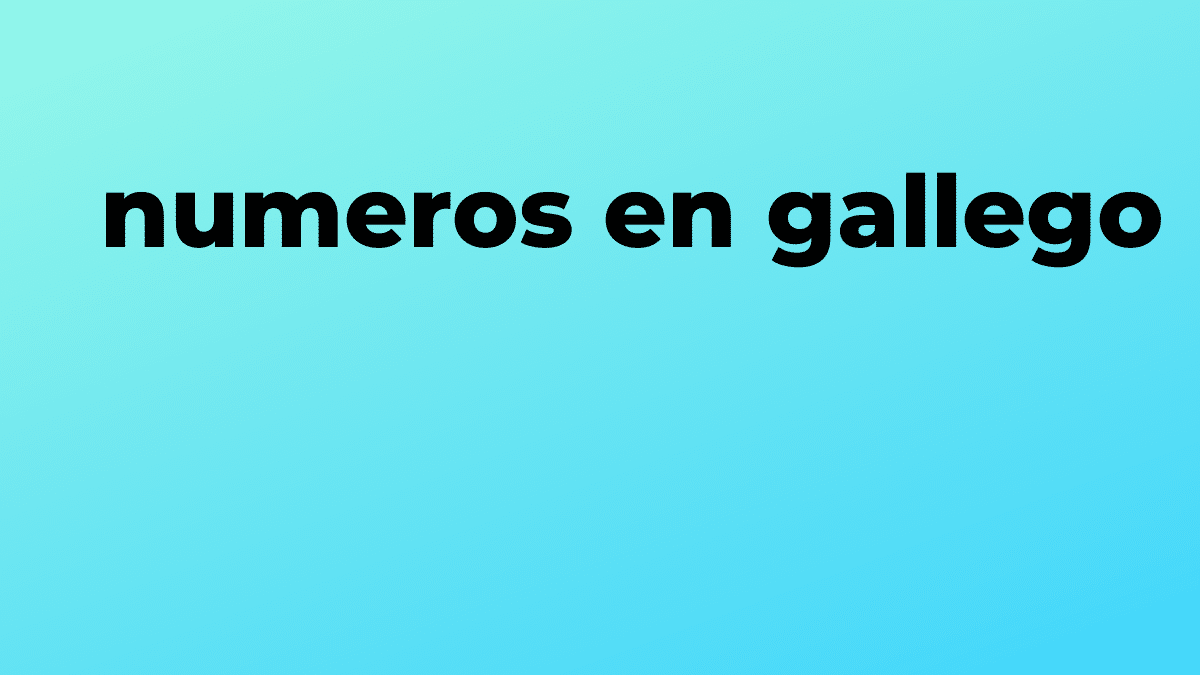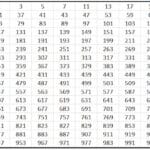
Basic numbers in Galician
The basic numbers in Galician, also known as cardinal numbers, are those that we use to count in ordinal form. These numbers are fundamental to learning any language, since they allow you to express quantities and positions. Next, we present a list with the basic numbers from 1 to 20, with their translation into Spanish and the phonetics in parentheses.
- 1 – a (oon)
- 2 – dous (dows)
- 3 – three (trays)
- 4 – catro (catru)
- 5 – five (theenko)
- 6 – six (says)
- 7 – set (setay)
- 8 – oito (oytoo)
- 9 – nove (nobay)
- 10 – dez (deth)
- 11 – eleven (on-thay)
- 12 – twelve (do-thay)
- 13 – thirteen (tray-thay)
- 14 – fourteen (kator-thay)
- 15 – fifteen (keenthay)
- 16 – you say (deth-a-sayss)
- 17 – dezaset (deth-a-setay)
- 18 – dezoite (deth-oytoo)
- 19 – dezanove (deth-anobay)
- 20 – vinte (bintay)
Numbers from 21 to 99 in Galician
Continuing with the cardinal numbers in Galician, to count from 21 to 99 you need to know the specific structure of this language. Unlike Spanish, where the minor number is placed after the major number (such as twenty-two), in Galician, the minor number is preceded by the set "e" (meaning "and"), followed by the major number. Here are some examples:
- 21 – vinte e un (bintay eh oon)
- 32 – trinta e dous (threen-ta eh dows)
- 99 – ninety nine (nobenta eh nobay)
As for the multiples of ten, they are formed by assigning to each number an "-enta": thirty, fourty, fifty, sixty, seventy, eighty and ninety.
Numbers from 100 to 999
The number system in Galician continues with the numbers from 100 to 999. To form these numbers, the same structure is used as in Spanish.
- 100 – cen (then)
- 200 – douscentos (dows-then-tohs)
- 300 – three hundred (trays-then-tohs)
- 400 – four hundred (catru-then-tohs)
Now what about a number like 256? Following the logic of the Galician cardinal numbers, it is formed as follows: douscentos cinquenta e seis (two-hundred-fifty-and-six).
Numbers from 1000
Galician also has numbers greater than 1000. The interesting thing is that from the number 1000 the system becomes very similar to that of Spanish.
- 1000 – thousand (meel)
- 2000 – two thousand (dows meel)
- 10,000 – ten thousand (deth meel)
Ordinal numbers in Galician
Ordinal numbers are important in any language, since they allow establishing order in a sequence. Below is a list of ordinal numbers from 1 to 10 in Galician, with their translation into Spanish and their pronunciation:
- 1st – primeiro (primeyrow)
- 2nd – second (second)
- 3rd – third (terseyrow)
- 4th – fourth (kwarto)
- 5th – fifth (keento)
- 6th – sixth (secksto)
- 7th – seventh (seteemo)
- 8th – oitavo (oytawo)
- 9th – XNUMXth (nobeko)
- 10th – tenth (dezemo)
We hope this complete guide on Galician numbers and their pronunciation has been helpful for those interested in learning this beautiful language. Remember that, as in any learning, the constant practice and language exposure are essential to acquire a good command of Galician. Go ahead and count in Galician!



